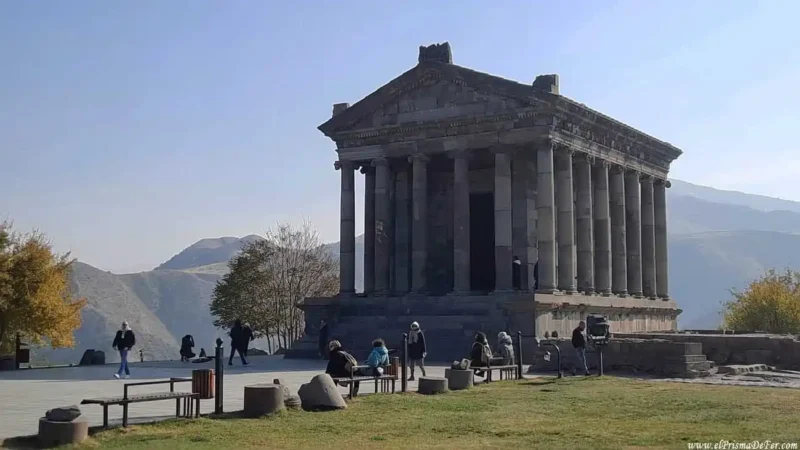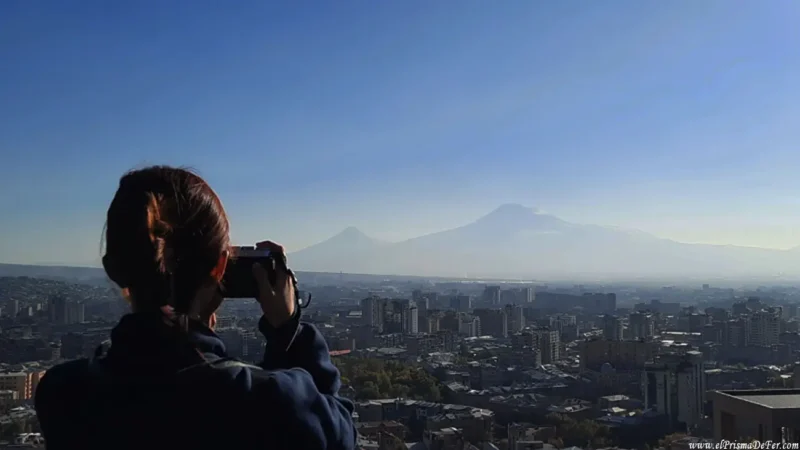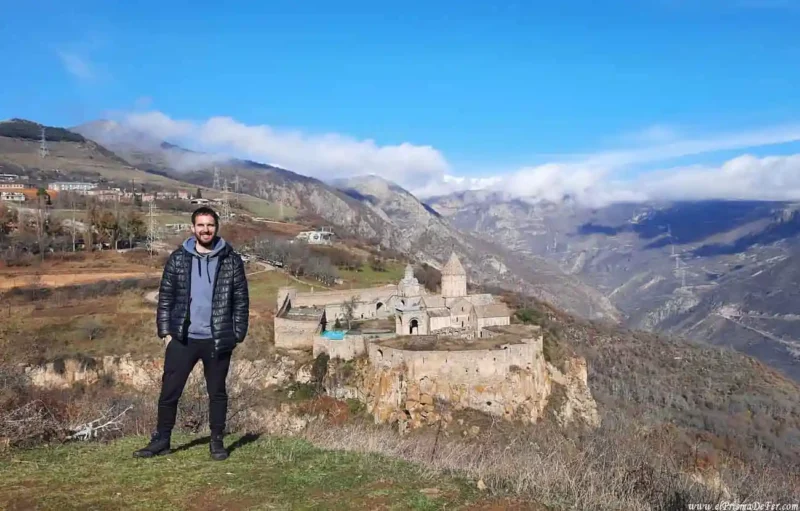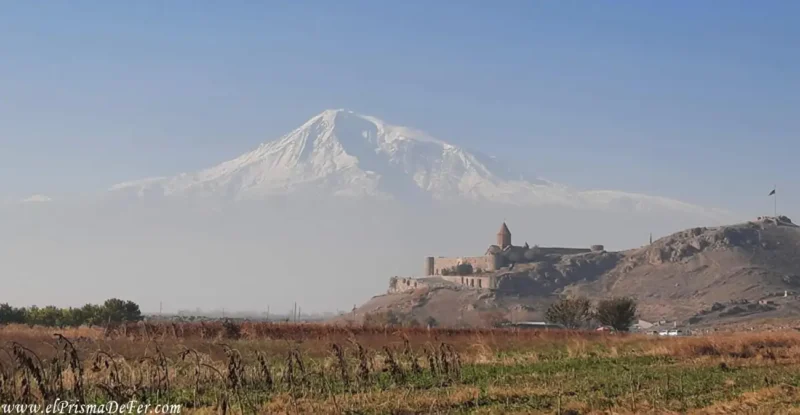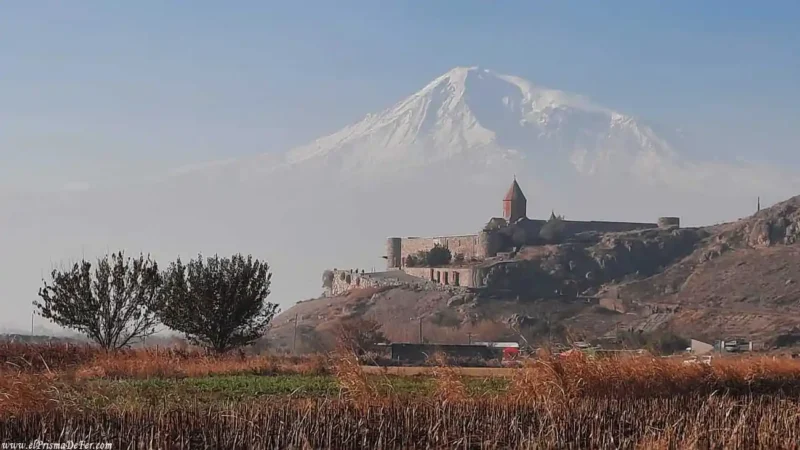Located in a particularly beautiful canyon, the Noravank Monastery is not only a 13th-century architectural masterpiece, but also a cultural landmark and one of Armenia's main attractions.
To get there, I based myself in the small town of Yeghegnadzor, a quiet place that serves as a strategic stopover on the route between Yerevan and the south of the country. Although it's not a city with too many tourist attractions, it's an ideal starting point for Noravank and other corners of the Vayots Dzor region.
In this article, I'm going to tell you everything you need to know to visit Noravank Monastery, including how to get there from Yerevan, transportation options, what to do in the city, trekking to a church, and personal recommendations based on my experience.
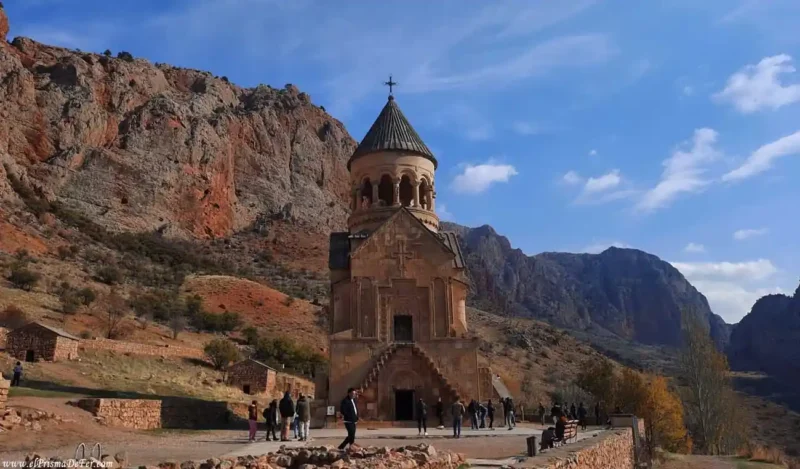

Table of Contents
Where is the Noravank Monastery located?
The Noravank monastery is located in the Vayots Dzor region, about 120 km southeast of Yerevan. It is situated at the end of a narrow canyon with reddish walls, giving it a spectacular and very distinctive natural setting. The road leading there is a secondary road off the main Yerevan–Goris Highway, near the village of Areni, famous for its winemaking tradition.
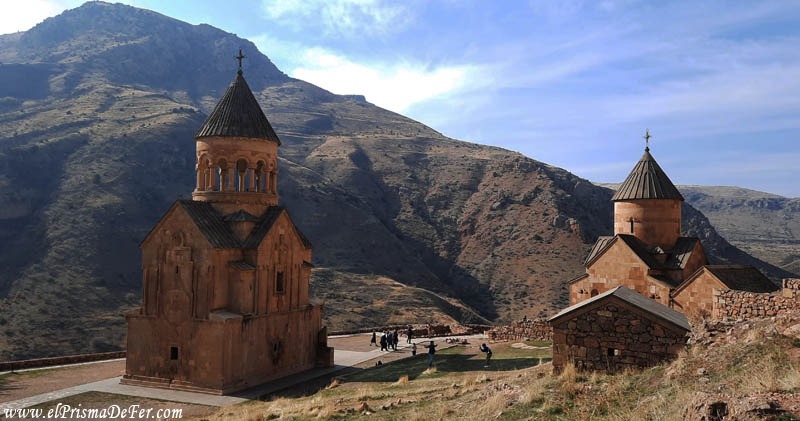
The location high above the valley not only reinforces the mystical atmosphere of the place, but also offers incredible panoramic views of the canyon, especially at sunset when the mountains turn orange. Therefore, beyond its historical and religious significance, Noravank is also a very attractive destination for those who enjoy natural landscapes.
How to get to Noravank Monastery
By public transport
- From Yerevan: To get to Noravank Monastery by public transport from Yerevan, you can take a marshrutka from Yerevan's Sasuntsi David Station (see on map) to Yeghegnadzor, the nearest town. The journey takes approximately 2.5 hours.
- From Goris: You can take a marshrutka from the city (see location on map) and connect Goris with Yeghegnadzor. The journey takes approximately 2 hours, depending on traffic and stops along the way.
From Yeghegnadzor, it's about 22 km of paved road that leads into the spectacular canyon to the monastery. The most practical way is to use Yandex Go, negotiate a taxi or a private car that will take you to the entrance of Noravank, since there is no direct public transport to the monastery.
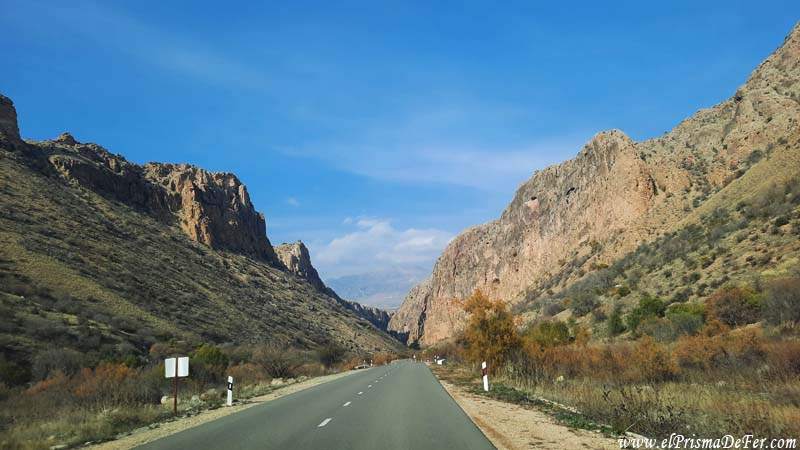
How to return from Noravank
To return to the city, the easiest way is to ask the same car that took you there to wait for you. Another common option is to hitchhike on the road that connects Noravank to the main route.
This option works very well because many Armenians visit the monastery by car, and they usually have free space to accommodate passengers. In our case, it took no more than 15 minutes until a vehicle stopped and took us directly to the city, since it was on the way.
On an excursion or by rented car
The easiest and most convenient way to get to Noravank from Yerevan is on an organized tour or by rental car, as the road is good and the detour is well signposted near the village of Areni.
Booking a day tour from Yerevan, which usually combines Noravank with the Areni wine region or even Tatev Monastery, allows you to make the most of your visit to this part of the country.

History of Noravank Monastery
The Noravank Monastery, whose name literally means “new monastery”, was founded in the 12th century and became one of the most important religious and cultural centers of Armenia during the Middle Ages. Throughout the 13th and 14th centuries, it reached its peak, especially under the patronage of the Orbelyan family, who financed much of its construction and beautification.
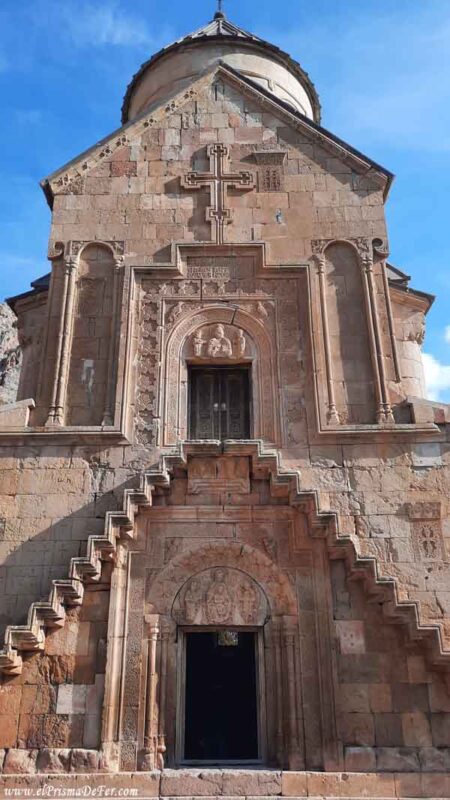
One of the highlights of Noravank is that the famous architect and sculptor Momik worked here, responsible for several of the churches in the complex and their intricate stone decorations. His reliefs, which include carved crosses (khachkars) and depictions of Christ and saints, are considered masterpieces of medieval Armenian art.
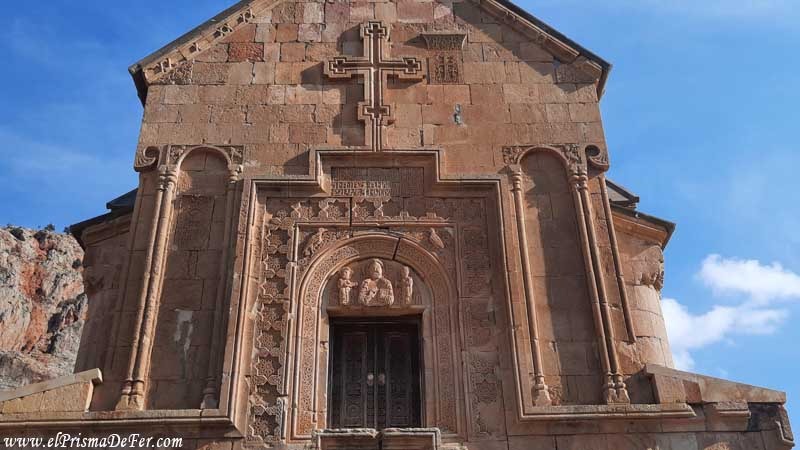
The monastery was not only a religious center but also a cultural space where manuscripts were copied and the region's intellectual life flourished. Although it suffered earthquakes and invasions, many of its buildings were preserved, and today Noravank is one of the most visited monastic complexes in Armenia, both for its historical value and its spectacular location in the middle of the canyon.
What to see in Noravank
The Noravank complex consists of several churches and chapels spread across a small esplanade surrounded by the reddish mountains of the canyon.

The most impressive is the Church of Surb Astvatsatsin (Holy Mother of God), built in the 14th century by the master Momik.
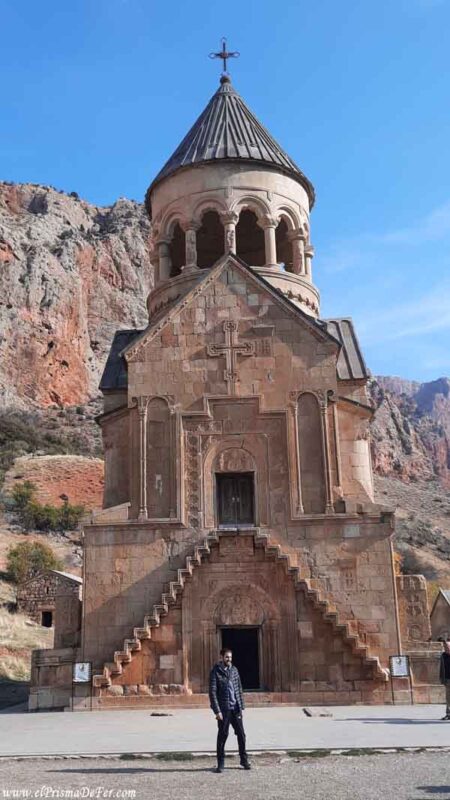
Its design is unique: it has two floors, and the way to reach the top is through a narrow exterior staircase carved into the façade, making it one of the most photogenic churches in the country.
Another notable building is the Surb Karapet Church, older and considered the monastery's main church. Although more sober, it retains beautiful reliefs and a more spiritual atmosphere.
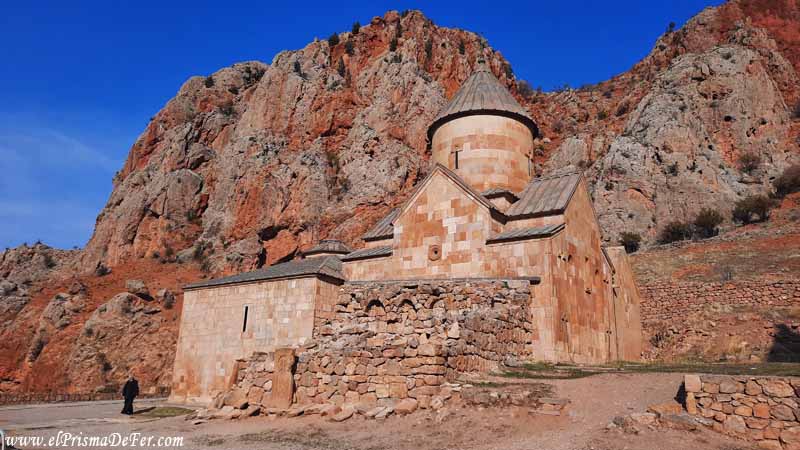
To one side is the small Chapel of St. Gregory, which is also part of the complex and was used as the pantheon of the Orbelyan family.
In addition to the religious buildings, in Noravank you can see a large number of khachkars (sculpted stone crosses), many of them the work of Momik, which are surprising for their level of detail and symbolism.
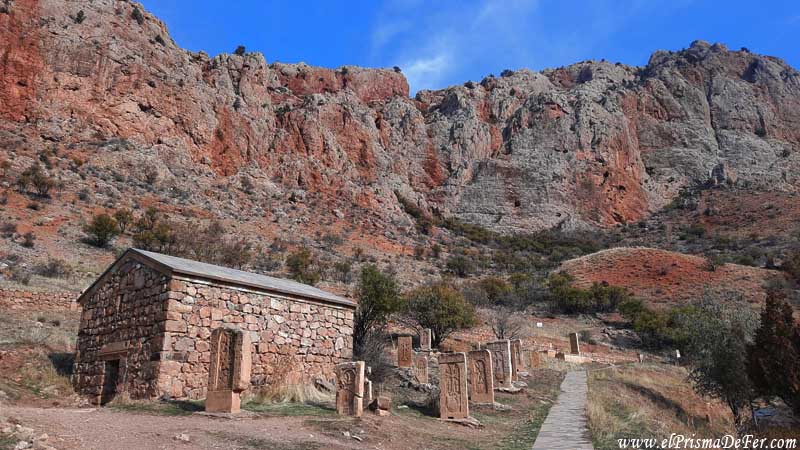
And if you arrive with more time and are planning to hike, several trekking trails depart from the complex, allowing you to explore the surrounding mountains and canyons. These marked trails offer panoramic views of the canyon and allow for a more active visit.
Prices and times to visit Noravank
Entrance to the Noravank monastery is completely free, as it is a religious site open to the public. The only thing you'll need to consider is transportation to get there, as there are no direct public buses, and you'll usually need to arrive by taxi, private car, or excursion.
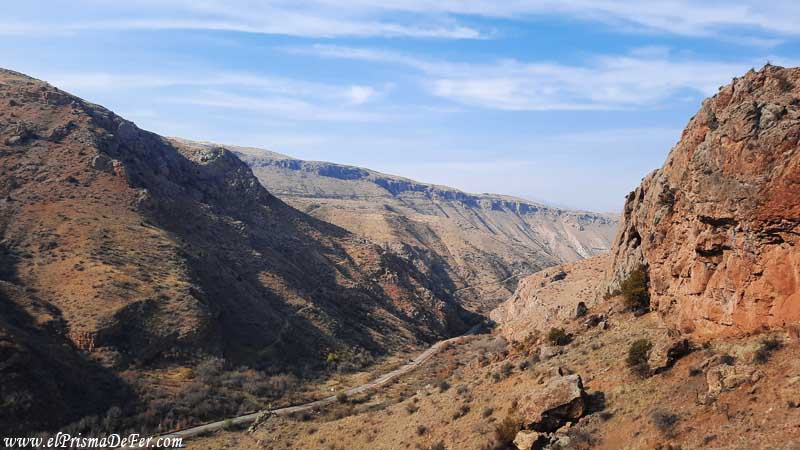
As for the schedule, the complex can be visited throughout the day, but it is best to go in natural light, as the canyon's mountains take on different shades depending on the time of day. If you arrive around sunset, you'll see the rock walls turn a deep red, a striking contrast with the pale stone churches.
Although the monastery doesn't have strict closing times, it's best to plan your visit during the day to take advantage of both the scenery and the tranquility of the place.

What to do in Yeghegnadzor
The city of Yeghegnadzor is not very large and, in itself, does not have too many tourist attractions. However, it can be a good base for exploring the surrounding area, especially for a day hike.
Trekking to Spitakavor Church from Yeghegnadzor
The most recommended route is the one that leads to the Spitakavor Church, a walk of about 12.5 km one way (and the same on the way back), which can take around 7 hours in total, depending on the stops.
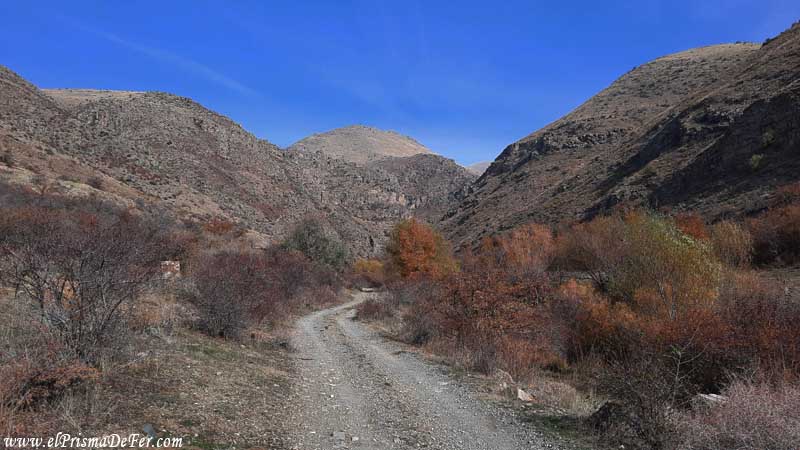
The route starts in Yeghegnadzor itself and heads away from the main road. Along the way, you'll pass the historic University of Gladzor (view on map), a medieval institution, before entering a gradually rising canyon.
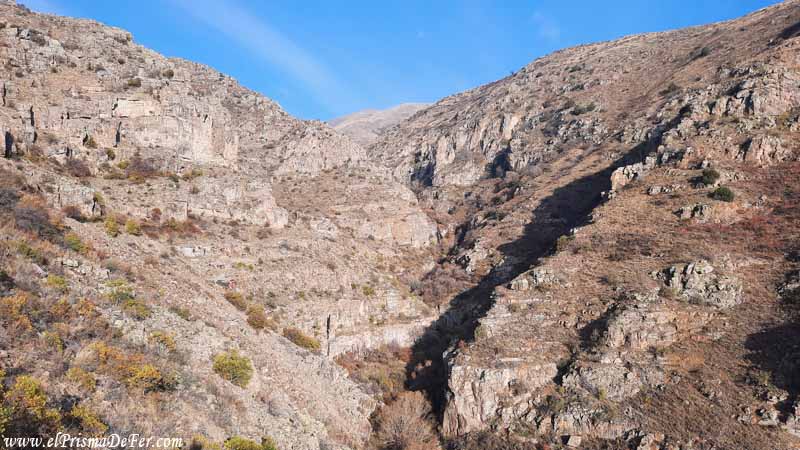
During the ascent, you can enjoy spectacular views of the mountains surrounding the region, a landscape that constantly changes as you advance.
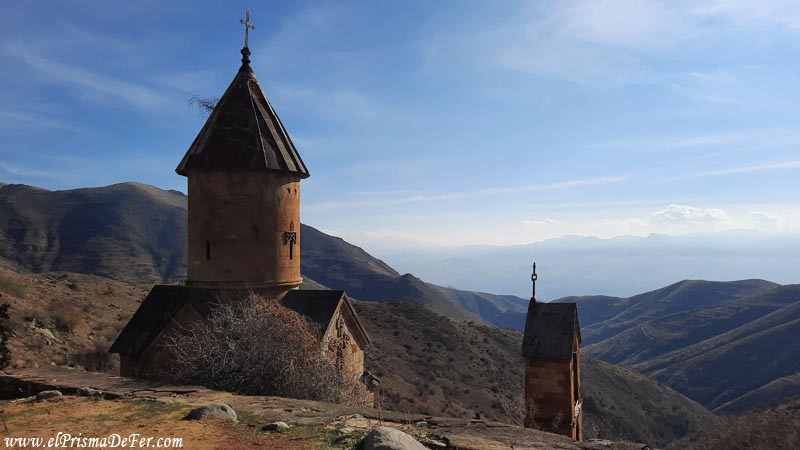
Finally, after several hours of walking along a well-marked path, you reach the Spitakavor Church, a small but ancient temple surrounded by absolute silence and very good panoramic views.
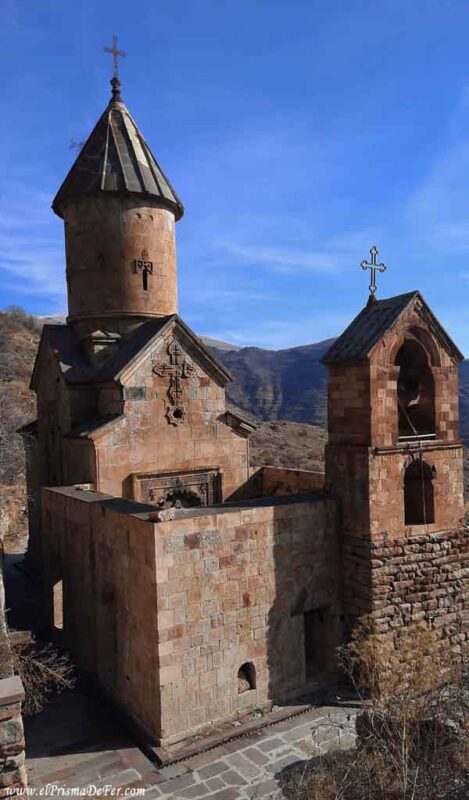
It's an ideal experience to dedicate a full day to if you decide to base yourself in Yeghegnadzor, as I did.
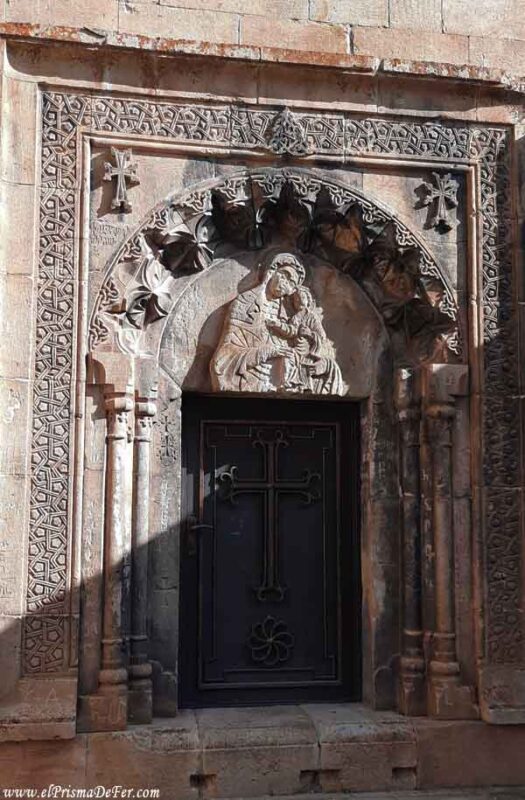

How to return to Yerevan from Yeghegnadzor
To return to Yerevan from Yeghegnadzor, the most common way is to take a marshrutka from the city entrance (see on map), which connects directly to the capital. Journeys usually take approximately 2.5 hours, depending on traffic and stops en route.
Another option is to negotiate a taxi or private car, especially if you arrived in Noravank by private transportation and want to return comfortably or avoid waiting.
Where to eat in Yeghegnadzor
The city of Yeghegnadzor doesn't have a wide range of cuisines, so it can sometimes be difficult to find a variety of places. Our usual stop was the Food Court Yeghegnadzor, a buffet-style restaurant located on the main road.

The place offers a good variety of dishes, from local options to simpler fare, with affordable prices and generous portions. It's ideal for those passing through Noravank or based in the city, as it offers quick, affordable, and hassle-free dining with a variety of options.
Where to sleep in Yeghegnadzor
The accommodation offering in Yeghegnadzor is not very extensive, and it can be a bit difficult to find a place that combines a good location, comfort, and price close to the center.
After comparing options, we decided on KARINE B&B, which although it is about 10-15 minutes walk from the central square, seemed to us to have the best value for money in the city.
The accommodation did not disappoint: comfortable rooms, a peaceful atmosphere, and typical Armenian hospitality, with owners always willing to help with whatever you need.
Without a doubt, a recommended option if you are thinking of basing yourself in Yeghegnadzor to visit Noravank or do some of the trekking in the area.
Best time to visit Noravank and Yeghegnadzor
The Noravank and Yeghegnadzor region can be visited year-round, but the experience varies greatly depending on the season.
The best time to visit is from April to October, when the weather is warmer and the days are long, ideal for exploring both the monastery and the surrounding trails. During these months, the sun illuminates the reddish walls of the canyon, highlighting the contrasts with the pale stone of the churches.
However, winter and late autumn can be more challenging. Temperatures drop considerably, and there's a chance of rain and, occasionally, snow, making the trekking trails more difficult and the visit less comfortable.
Final thoughts on my visit to Noravank
While Noravank is one of the most popular attractions in Armenia and its location in the reddish canyon is really pretty, I personally don't consider it one of the most epic places I've visited in the country.
After touring other monasteries like Tatev or taking in the view from Khor Virap, I feel those sites offer more striking and memorable views.
That said, if you have time, it's a good idea to visit Noravank to get to know it and enjoy its natural surroundings. Plus, for those who enjoy trekking, the area offers interesting routes around the canyon that combine nature and history.
Support The Prism of Fer!
Your support helps me continue creating free content on the blog. Thank you so much!


